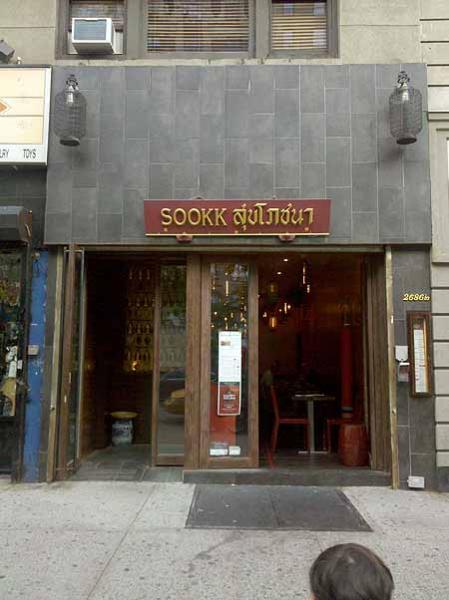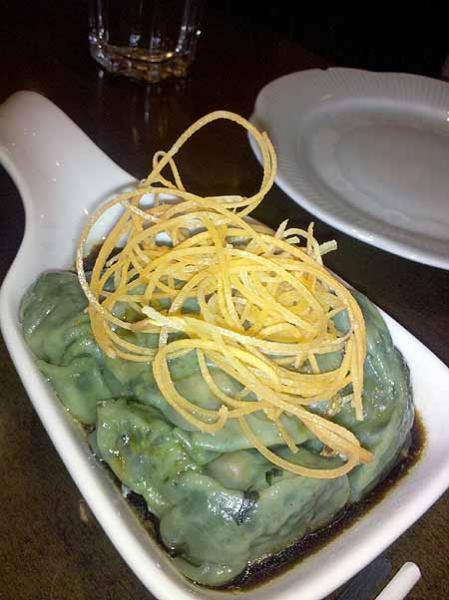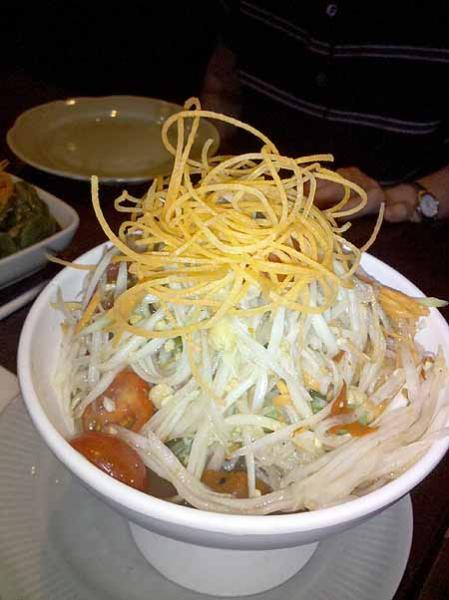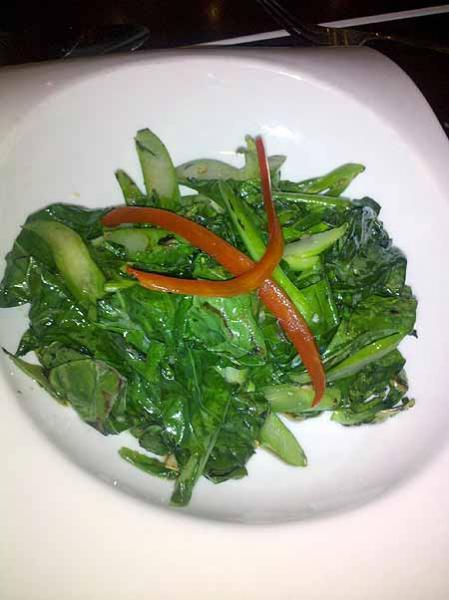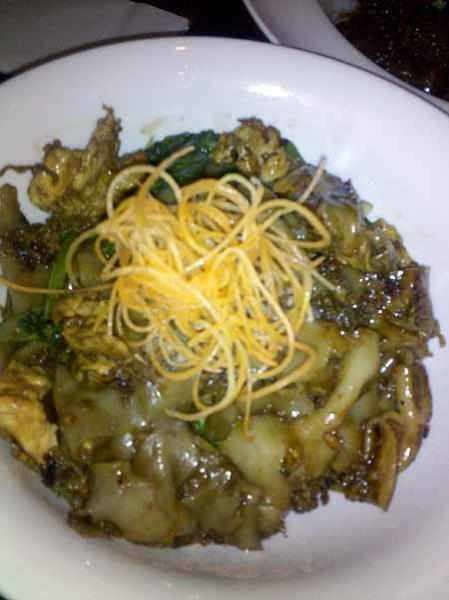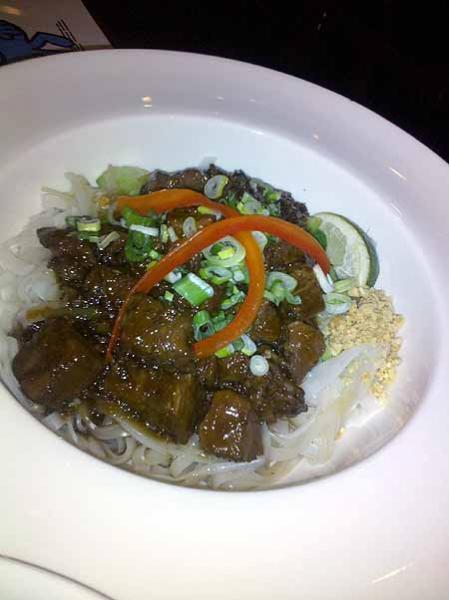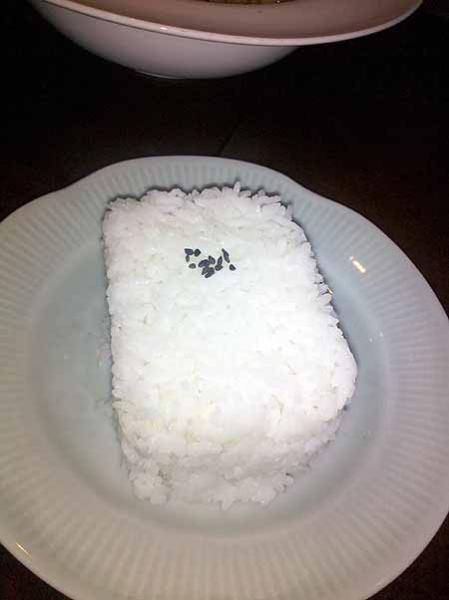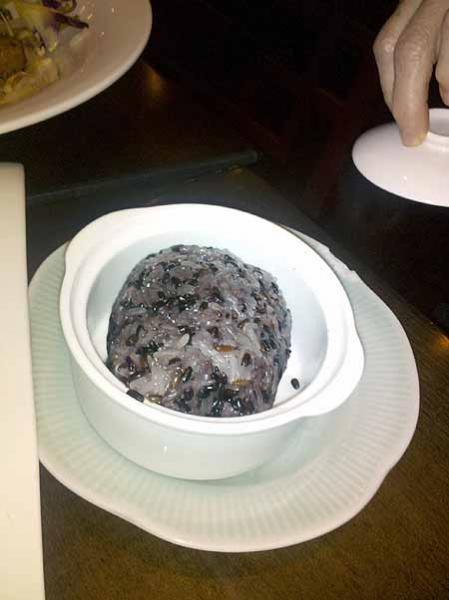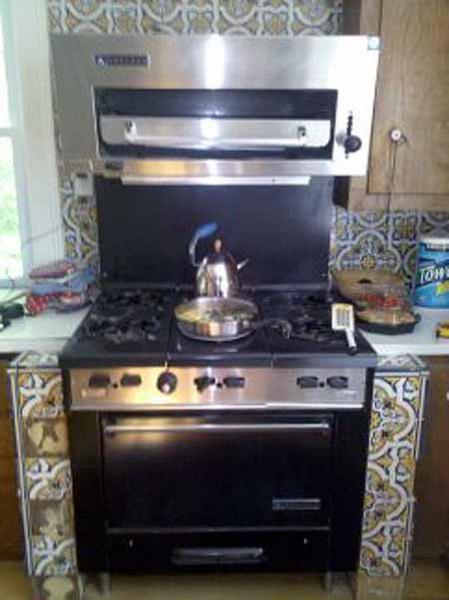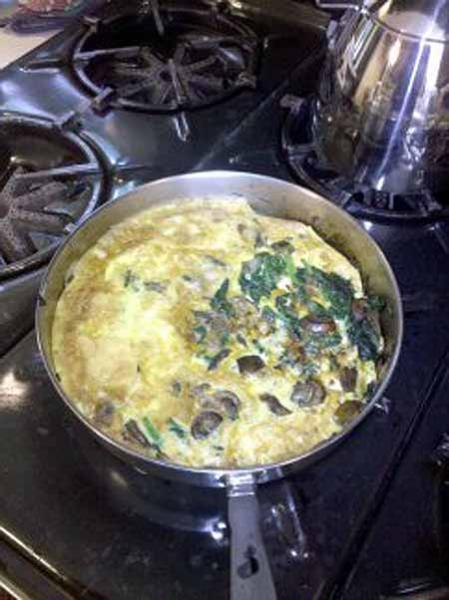-
Posts
28,458 -
Joined
-
Last visited
Content Type
Profiles
Forums
Store
Help Articles
Everything posted by Fat Guy
-
I don't think I ever hit the blades with the tamper, because to its dying day the tamper was pristine. I do think I "over-tamped" on many an occasion, and I'm sure if I pussy-footed around the Vita-Mix I could have extended its life indefinitely. But on the instructional DVD it specifically says don't be afraid to push down hard, and at the price point it shouldn't be a machine that needs to be treated gingerly -- yet it is.
-
I'd love to have one, and it does seem like an incredibly durable item, but it's well over US$1,000 for one of those and my guess is it's not a particularly efficient smoothie maker anyway.
-
I think it was all cumulative damage. A small crack showed up toward the base of the pitcher one day, and it got bigger over time. The gear teeth and nut got damaged, most likely, one of the times the pitcher got pushed up off the base during operation -- an event that also makes a horrible noise. I don't know how the blade got damaged, but probably one frozen banana too many, pushed down too hard with the tamper. I pushed the Vita-Mix to its limit, and beyond, over a period of months. I never dropped it or put golf balls in it or anything like that. I just worked it to death.
-
I can't report first-hand because I've only used the Blendtec about four times. I've done a lot of reading on this but what I've read has so far been so unreliable that I hesitate to cite it as authority. But, as a very basic reference, the online consensus seems to be that the Vita-Mix is better for sorbets, herb purees, and other things where the tamper helps, and that the Blendtec is better for smoothies (because of the auto cycles) and nut butters (because the motor is stronger). Whether any of that is true I can't say. Sam, the ruptured coupling was the last straw. I'd already cracked the container base (I wouldn't have repaired that), scuffed one blade pretty badly, caused some damage to the nut (retainer nut), and wore down the gear teeth on the pitcher. I think my repairs would have been at least a coupling (drive socket) and retainer nut, which I think requires purchase of a special wrench. So that all should run about $40 or more. I imagine I could have had it all done under warranty, though I'm not sure it would have been worth shipping the unit and losing use of the blender for so long. My concern, though, was that if I was going to have this happen at regular intervals over time -- no less needing to replace a $150 container, $90 blade assembly, etc., on occasion, which seemed to be the direction in which I was headed with my unit. That's on top of the inconvenience of frequent motor shut-downs, which are especially annoying when you've got $5 worth of frozen fruit half processed and you lose use of the blender. I'm assuming that before plastic was an option, Vita-Mix units were made out of metal and had either metal or glass pitchers. That would be my preference. The Blendtec, unfortunately, also relies heavily on plastic, though the pitcher material seems tougher than the Vita-Mix material. We'll see how it holds up over time. So far it has lasted a day.
-
I agree it's going to be hard to compare. The only thing I can say preliminarily is that if Blendtec's container, blade and programming combine to make it possible to perform the critical tasks without a tamper -- as Blendtec claims can be done -- then it has a real leg up over Vita-Mix. Whereas, if that claim is untrue, I'll be spending a lot of time shutting off the unit and sticking a spoon in to mix things around, in which case a few months from now I'll get another Vita-Mix. If Vita-Mix turns out to be the best available option, so be it, but I think it's a highly flawed machine. Vita-Mix is guilty of going too far in the direction of plastic. The casing is plastic, the pitcher is plastic, the controls are plastic, the drive socket is rubber. The Vita-Mix website's forum is full of posts from people complaining about these parts, and I do think ultimately they're all replaceable -- but I don't want to have to replace them. To get my Vita-Mix back to fighting condition I'd have needed to lay out $40-$60 for parts, to get a new drive socket, wrench, part or all of the blade assembly... I'm not totally sure but to me that sort of disposability is not okay in a $400 product. It's the same way I feel about the crummy resin handles on Le Creuset pots. Yes, they can be replaced. But the ones on Staub pots are metal and never need to be replaced.
-
The price is ridiculous. Unfortunately, there doesn't appear to be an alternative to the $400 price point. Nobody is making a no-frills, no-marketing-costs, $200 blender that has a motor on par with one of the high-power units.
-
P.S. I think with the Vita-Mix the main stress on the unit is from all the tamping, which isn't a factor with the Blendtec. So it may be that the Blendtec can be less sturdy yet last longer. I don't know. P.P.S. The high-power blenders do a great job on sesame seeds. In fact, in the Vita-Mix hummus recipe, you just put the sesame seeds in whole and it becomes tahini during the blending process.
-
If anything, the Vita-Mix looks sturdier than the Blendtec. It's bigger and heavier, it has large knobs and switches. The Blendtec has much more of the appearance of a consumer product, with a digital readout and membrane buttons. Also, the coupling between the base and the blender is smaller. That being said, visual examination can only tell so much. For example, despite its smaller size the Blendtec has a substantially more powerful motor.
-
Last November I got a Vita-Mix. I'd been making smoothies almost every day in a Waring bar blender, slowly learning that while it's possible to make a smoothie in a Waring bar blender it's a categorically different process from making one in a high-power blender. I don't blame people who don't accept this truth. It took me years to overcome the denial. But the reality is that there are two very different categories of blenders out there in the world: the high-power units that cost several hundred dollars, and the rest. I talked about this so much toward the end of last year that my wife and son finally bought me a Vita-Mix as a present. Specifically, the Vita-Mix 5200 they were selling at Costco for $395. There are a few different Vita-Mix and Vita-Prep (the commercial label) models out there but having played with most of the ones in the lines that are cosmetically similar I can say that, while there are minor differences of interest to the connoisseur, a Vita-Mix is a Vita-Mix. Now, before I go on, please realize that anything negative I have to say about the Vita-Mix must be viewed in light of its indisputably profound awesomeness when compared to normal blenders. If you put frozen raspberries in a smoothie in a regular blender you can blend it for an hour and you'll still have unpleasant raspberry seeds in your final product. Do it in a Vita-Mix and in 30 seconds you have a totally smooth beverage. Ditto for whole flax seeds or anything of that nature. The Vita-Mix is powerful enough to make thick frozen desserts of the sorbet variety. And if we are to believe the various nutritional claims out there, because a high-power blender breaks down food so effectively at the cellular level it makes a host of nutrients "bio-available" that would normally just pass through the body. That being said, for what you pay the Vita-Mix is basically a piece of junk. It took me about six months to destroy one. When I first got it, I told a chef friend and he said "They're great but we break about two a year at the restaurant." The main problem, as far as I can tell, is that there's too much plastic, rubber and other inferior materials used in the construction of the Vita-Mix. In particular, the coupling between the motor base and the pitcher, which drives the blade, is weak. It doesn't seem weak if you just use a new Vita-Mix a few times -- at that point it feels incredibly sturdy. But if you really wail on the thing for a few months that coupling breaks down. It's bizarre that a $400 blender doesn't have all its critical parts made of high-grade steel, but I guess the retail price tag doesn't reflect the actual production cost. Not only is there the retail markup, but also there has got to be a huge marketing budget. The cost of sending armies of demonstrators out to every Costco and country fair has got to be prohibitive. They also make it in America, which can't be cheap, though the motor is imported from Europe (which probably isn't cheap either). Luckily, the thing has a 7-year warranty for home use, so you can just send it to Vita-Mix and they'll fix it. And Costco will give you your money back pretty much forever. We decided to take it back to Costco for a refund. You can't really do an exchange because the only time it's possible to buy a Vita-Mix at Costco is when there's a Vita-Mix roadshow event in progress at that particular warehouse. So I figured we'd be without a blender for a while, which was really going to put a crimp in my healthy lifestyle. The high-power blender gods were smiling on me, however. It turns out that, at the Costco in Union, NJ, where we returned the Vita-Mix, there was a Blendtec demo in progress. I had been curious about the Blendtec for some time. As part of my early smoothie education I made a bunch of visits to Jamba Juice (thanks to a gift card from Cousin Jane), and one of the things I noticed was that they use Blendtec blenders there. The guy at the smoothie place on East 96th Street near the subway also uses a Blendtec. So does Starbucks. Indeed, I have yet to notice a smoothie place using anything other than the Blendtec, though I'm sure such places exist because there's also a Vita-Mix series, "Touch & Go," that apparently performs like the Blendtec. One big reason for the popularity of the Blendtec in commercial settings is that it's self-sufficient. If you go to Jamba Juice you'll notice that the person builds the smoothie in the blender pitcher, places it on the blender base, pushes a button and walks away. The blender starts off slow and, over the course of about 45 seconds, goes through a programmed sequence of speeds designed to draw the ingredients down through the blades and then process the heck out of them. This allows them to make several smoothies at a time and to work on building the next one while the blender is running. A standard Vita-Mix, by contrast, tends to require more participation. The Vita-Mix is pretty dependent on its "tamper," a black plastic pusher used to force heavy items down into the blades. You don't need it for thinner mixtures but if you're using a lot of heavy stuff and ice and such then you need to stand there and press with the tamper while the machine is running (the pitcher lid and tamper are designed in such a way that you don't have to worry about pushing the tamper far enough to hit the actual blades, though I know one guy who did it). And the Vita-Mix has manual controls, so if you want to speed it up and slow it down you have to stand there and do that. After watching the demo twice, we left Costco with a shiny new red Blendtec Total Blender. It was $15 cheaper than the Vita-Mix, so we also bought two watermelons. It's going to take me a few months with the Blendtec to see how it compares, durability-wise, to the Vita-Mix. I've only used it a couple of times so far. Preliminary results have been good. In the meantime, my friend Sean now has a Waring Xtreme. This is the other and newest contender in the high-power blender arena. Sean and I spend a lot of kitchen time together, so I'll be experimenting with his blender over time. My preliminary reaction to the Waring Xtreme is that it's still a beta product but we'll see if it grows on me. A couple of related topics: Vita-Mix topic. Smoothie topic. Blendtec topic. More to come, of course.
-
Grind it up and make hamburgers.
-
I'm not sure I agree that pork is less flavorful than beef. But I'm also not sure that comparison can be made in the abstract. Pigs and cows are large animals consisting of very different cuts of meat, and there's a lot of variation from pig to pig and cow to cow. In any event, Bittman does acknowledge that he's advocating for sausage patties, not really burgers. And those can certainly be delicious. But I don't think it's a question of one being better than the other. A minimalist hamburger made from excellent ground-to-order beef seasoned with only salt can be a great thing, as can a heavily seasoned ground-meat patty using a combination of meats. My feeling is that when you have the excellent meat you should cook it without much adornment, whereas if you're limited to meat that doesn't look good naked you should season and manipulate the heck out of it.
-
Along those lines: Korean barbecue. Meat is sliced thin and marinated, then griddled at high temperature. You can get very good flavor and texture, with the inside tender and the outside crisp.
-
I've been to Lotus of Siam (posted about it here) and never heard of the other place. But I wouldn't really compare Lotus of Siam to any Thai restaurant in New York City (except maybe something like Vong in its heyday). The level of refinement, prices, wine program, and departure from traditional Thai cuisine all make Lotus of Siam hard to compare. Lotus of Siam is certainly a better restaurant than Sookk, and it's also better than Sripraphai, but it's so different I'm not sure the comparison means all that much.
-
Months later, we have finally sold the one Lee Bailey book that seems to be worth anything. Lee Bailey's Corn fetched ten bucks.
-
In my limited experience with stainless it takes on the look of well-used metal pretty quickly. So, since it won't look new for long, why not see if there's a used worktable available at a local restaurant-supply shop?
-
For me the basic argument boils down to: - Where both restaurants make the same dish and I've tried both, Sookk is better, e.g., green papaya salad, pad see ew, curry - Where Sookk has dishes that Sripraphai doesn't, e.g., turnip cake with mussels, "sidewalk noodles," there's nothing at Sripraphai to offset
-
I worked in that vicinity in the 1990s and I'm stumped. I remember Un Deux Trois being right around there but not upstairs. I'll keep thinking. Any additional details you can provide might help trigger someone's memory.
-
I don't believe so. I think Klong has some individual dishes that are better than the Sripraphai equivalents. But Sookk is, in my opinion, a superior restaurant. Stylistically, there are some points of commonality among Sookk, Klong and Room Service, because (according to Julia Moskin in the New York Times) a fellow named Ahm Bopit is either a partner or somehow involved in all of them. But Sookk is the first Thai-derived restaurant I've been to since I started going to Sripraphai many years ago that I thought was better than Sripraphai straight up. That's separate from the issue of Sripraphai not being as good now as it once was.
-
A couple of years ago my guitar teacher, Jonathan, said he had a great Thai restaurant for me. This is the sort of information I routinely ignore, because the past several dozen Thai restaurants people have recommended to me have been mediocre. Except this one. A few weeks after he told me about it, I found myself needing a place to meet for lunch in that neighborhood (Manhattan Valley, I guess they call it now) and I remembered Jonathan's recommendation, so I took a friend to Sookk, which is on Broadway between 102nd and 103rd Streets. I went back soon after. After those first two meals, I emailed a friend: That was June 16, 2008. Sookk then got lost in the shuffle of meals and memories that slip away because I don't post about them soon enough after they occur. Fast forward to early this year. My wife and mother-in-law needed a recommendation for lunch after Symphony Space. Something in my unconscious called out Sookk, so they went. They came home raving about the place. "Why have you been keeping this a secret from us?" they challenged. Since then I've been back five times and I'm here to tell you that Sookk, which was quite good in 2008 when it first opened, has now grown into the best Thai restaurant in New York City. Better than Sripraphai. Better than anything. Tonight we had... Turnip cakes with mussels: This is a dish you're just not going to find many places. It's a good example of the kind of dish that sets Sookk apart: a refinement of a Southeast Asian street-food dish. The dish teeters on the edge of weird fishy funkiness but the flavors are balanced such that it's delicious. You wouldn't want to eat it as leftovers. Chicken and pumpkin curry: Another dish that rises above the norm. Curries are so boring at most places, with even the best ones mostly offering just heat as distinguishing traits. This one is actually different, though. It's a curry you haven't tasted yet. "Sidewalk beef noodles": I guess the derivation of this dish name is that they're representative of something sidewalk vendors serve, but I can't tell you how many times we've made the joke that these noodles have to be eaten on the sidewalk to be enjoyed. Just tonight I asked our son PJ, just shy of 5 years old, whether he's like some sidewalk noodles and he said, "Can we eat them on the sidewalk?" In any event, they're delicious, topped with very tender braised beef. They're available with a brown sauce, as here, or in a broth. Pad See Ew with chicken: The standard dish, made very well. Green papaya salad: The best green-papaya salad I've had. "Green leaf dumplings" These we got for someone with dietary restrictions, but they're pretty good by any standard not just if you're a vegetarian. An appetizer assortment of fried stuff: Spring rolls, sesame tofu, chicken-and-shrimp fritters, fried shrimp, all excellent. Chinese broccoli with oyster sauce: Jasmine rice and black sticky rice: It's a tiny restaurant but clean and comfortable. They've made the most of the space. On warmer days the front opens to the street. The website has a menu, contact info and not much else: http://sookkrestaurant.com/
-
We were at my mother-in-law's place in Connecticut last weekend. They installed a Garland restaurant range and salamander in the house in the 1970s. It still stands today: The thing is pretty awe-inspiring, and cooking on the burners makes a mockery of all "pro-style" ranges I've used. There's just no comparison between a real restaurant stove and a de-clawed range designed for the home, no matter how professional it looks. The salamander is even more impressive. You turn it on and a sheet of hotter-than-hell flame engulfs the roof of the broiler. Whatever you put in there gets cooked so quickly it's disorienting. I made a frittata and couldn't believe how quickly the top got browned. Much to my surprise, however, my mother-in-law had precious little good to say about the unit. She liked the burners on the range but nothing else. The oven, she said, never maintained a consistent temperature and was therefore not useful for baking. And she stopped using the salamander in the 1980s after one too many grease fires. As if on cue, the smoke alarm went off as she was telling me all this.
-
Not sure which place you tried on Lexington Avenue, but I've had great luck at Foods of India. I find their products to be very fresh and of high quality, at good prices. Not that I've ever had a bad experience with Kalustyan's.
-
A firmer seating policy can work in the customer's favor by eliminating the need to overbook. Overbooking results in restaurants not being able to honor reservations on time. Also, although what Achatz is doing is transparently a shift to a ticketed model, the trend over the past decade has been towards taking credit-card deposits at in-demand restaurants, and even at not-very-in-demand restaurants for larger tables, holidays, etc.
-
I think the broken yolk was a concession to portability, but like many things has acquired after-the-fact justifications: food safety, longevity. There's no question in my mind that an egg sandwich with an unbroken yolk is more delicious, and also no question that you need to break the yolk in the context of a grab-it-and-go, eat-it-on-the-F-train breakfast. You can always ask the griddle guy to make the sandwich with the yolk runny, and in some percentage of delis they won't say no.



